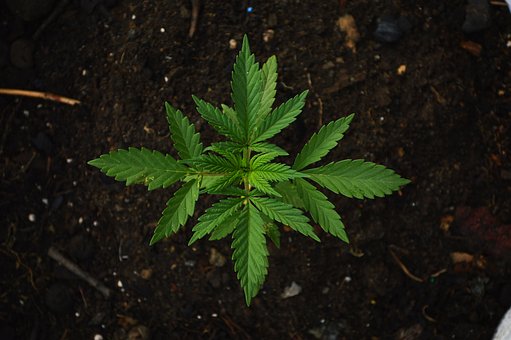Cannabis and hemp have many health benefits. How can these herbs treat a diversity of diseases such as cancer, Crohn’s disease, eczema, psoriasis, acne, chronic pain, epilepsy, insomnia, multiple sclerosis, depression, Alzheimer’s disease and many other conditions? How can these herbs treat both old and young people effectively? How can these plants provide both palliative and curative actions? How come they are so safe and yet so powerful and effective? Part of the answer lies in the 113 or more cannabinoids in these plants which have different effects on different body systems. Of these, cannabidiol (CBD) and tetrahydrocannabinol (THC) have been extensively studied. The other part of the answer lies in the system that the body has kept secret for a very long time, the endocannabinoid system (ECS).
The Endocannabinoid System
There has been a lot of research into the effectiveness of CBD oil, which has led to the legalization of cannabis and hemp for medicinal purposes. Legalization has led to even more interest in these plants and even more research. We are talking about an average of two scientific publications per day! As scientists set out to find out how these herbs can be so effective for a wide array of conditions, they were led to the discovery of the endogenous cannabinoid system (endocannabinoid system) in the human body in the 1990s.

We are all aware of the circulatory, skeletal, muscular, nervous, respiratory, digestive, reproductive, urinal, endocrine, lymphatic and integumentary systems. Most of us are not aware of the endocannabinoid system (ECS) which was discovered recently by scientists working with cannabis and hemp. It is the ECS that works with cannabinoids to improve our health.
The endocannabinoid system (ECS) has now been labelled as the most important physiological system in the establishment and maintenance of health. It consists of:
- Receptors in the brain, glands, organs, connective tissue and immune cells that respond pharmacologically to cannabinoids.
- Endogenous cannabinoid compounds in the body (such as anandamide and 2AG) that bind to these receptors. They are synthesized when needed, have a local effect and a short half-life.
The ECS is a biochemical communication system which plays a critical role in regulating our moods, our physiology and our everyday experiences. The system is literally a bridge between body and mind! That probably explains why our states of mind affect our physical health. That also explains why cannabis and hemp affect various systems including the brain.
- The ECS’s main role is homeostasis, the maintenance of a stable internal environment despite changes in the external environment. Cannabinoids work in the body by promoting homeostasis. They operate at sub-cellular and organism levels and most likely at community level.
- In autophagy, a process in which cells separate part of their contents to be self-digested and recycled, cannabinoids keep normal cells alive. When the cells happen to be cancerous, they are consumed in the same way. Death of the cancer cells keeps the whole organism alive.
- On the site of an injury, cannabinoids minimize pain and damage by preventing excessive firing of nerve cells, reducing the release of activators and sensitizers from the injured tissue, and preventing release of pro-inflammatory substances by immune cells adjacent to the injury.
- Cannabinoids are anti-oxidants that neutralize harmful free radicals, preventing early aging, cancer and other diseases.
- Cannabinoids act on the ECS to influence our relationship with the external environment by promoting humor, sharing and creativity.
- At mental level, cannabinoids facilitate generation of neurons, neural plasticity (the ability of the brain to change) and learning, leading to open-mindedness and ability to rise above limiting thought patterns and behavior.
- Extensive pre-clinical research—mostly sponsored by the U.S. government—indicates that CBD has powerful neuroprotective, anti-tumoral, anti-spasmodic, anti-psychotic, and anti-convulsive properties.
- CBD directly activates serotonin receptors, reducing depression and anxiety.
These are just a few of the many ways that cannabinoids influence good health in our bodies and the brain through the ECS. It is quite possible that cannabis and hemp can be very useful for treating a wide variety of diseases and conditions, can contribute to preventative healthcare and support adaptation to our increasingly toxic and carcinogenic environment. One study found that THC and CBD work better when used together than when used separately. That means it may be beneficial to use the whole plant rather than to isolate single active cannabinoids.
As you can tell, cannabinoids in cannabis and hemp are chemical compounds that trigger cannabinoid receptors (and other receptors) in the body, bringing stability and balance, resulting in good health. The more than 113 cannabinoids in cannabis and hemp, and the endocannabinoids all play different roles in the body by stimulating the receptors in the body and the brain. While most indigenous tribes used these herbs for dozens of ailments, the scientific community still lags behind, having focused mostly on HTC and CBD. We should be thankful that more countries are legalizing the use of these herbs for medicinal purposes because soon scientists will be confirming more of the health benefits that the ancients already knew about.
Thomas Edison was quite right when he said in 1902, “There were never so many able, active minds at work on the problems of disease as now, and all their discoveries are tending toward the simple truth that you can’t improve on nature.” This statement is being proven to be true right now.
